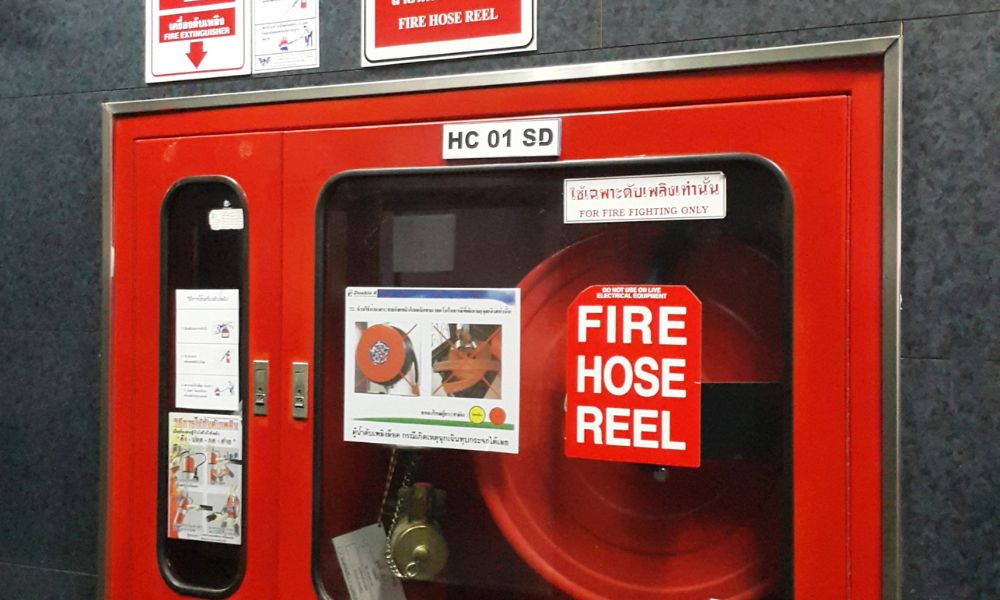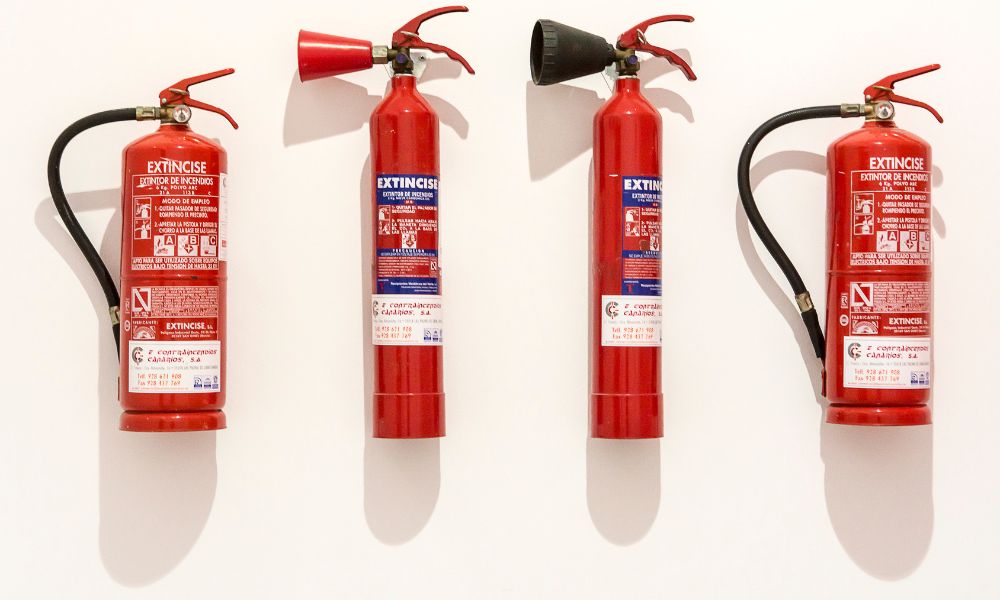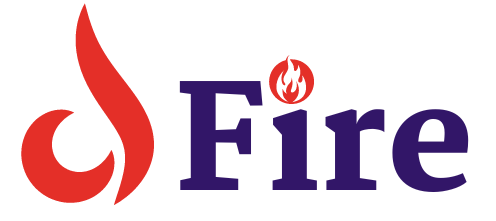Fire protection systems are an essential aspect of any building’s safety plan. These systems are designed to detect and suppress fires, preventing them from spreading and causing damage or harm to people and property. There are several types of fire protection systems available, each with its own unique features and benefits.
One of the most common types of fire protection systems is the sprinkler system. Sprinkler systems are designed to automatically detect and extinguish fires using water.
They are typically installed in areas where fires are most likely to occur, such as kitchens, mechanical rooms, and storage areas. When a fire is detected, the sprinkler system will activate and spray water onto the fire to suppress it.
Another type of fire protection system is the fire alarm system. Fire alarm systems are designed to detect fires and alert building occupants to evacuate the building.
They typically consist of smoke detectors, heat detectors, and other sensors that are placed throughout the building. When a fire is detected, the fire alarm system will sound an alarm and activate emergency lighting to guide occupants to safety.
Passive Fire Protection Systems
Passive fire protection systems are designed to contain the spread of fire and smoke, limiting the damage caused by a fire. These systems do not require any action or intervention from the occupants of the building and are always in place, providing constant protection.
Fire-Resistant Walls and Floors
Fire-resistant walls and floors are essential components of passive fire protection systems. These walls and floors are designed to withstand high temperatures and prevent the spread of fire and smoke between different areas of a building. They are constructed using fire-resistant materials such as concrete, brick, or gypsum board and are usually rated according to their fire resistance.
Fire Doors and Shutters
Fire doors and shutters are another important part of passive fire protection systems. These doors and shutters are designed to prevent the spread of fire and smoke by blocking off certain areas of a building. They are usually made of fire-resistant materials and equipped with intumescent seals that expand when exposed to heat, creating a barrier against fire and smoke.
Compartmentalization
Compartmentalization is the process of dividing a building into smaller, more manageable areas, each with its own passive fire protection systems. This helps to limit the spread of fire and smoke and makes it easier to evacuate occupants in the event of a fire.
Compartmentalization can be achieved using fire-resistant walls, doors, and floors, as well as other passive fire protection systems such as fire curtains and smoke barriers.
Overall, passive fire protection systems are an essential part of any building’s fire safety strategy. By containing the spread of fire and smoke, these systems can help to minimize damage and protect the lives of occupants.
Active Fire Protection Systems
Active fire protection systems are designed to detect, control, and extinguish fires. These systems are typically installed in buildings and other structures to protect occupants and property from the devastating effects of fires. Active fire protection systems include fire sprinkler systems, fire alarm systems, smoke detectors, and emergency lighting.
Fire Sprinkler Systems
Fire sprinkler systems are one of the most effective types of active fire protection systems. They are designed to detect and extinguish fires by spraying water over the affected area. Fire sprinkler systems are typically installed in commercial and industrial buildings, as well as in residential buildings.
Fire Alarm Systems
Fire alarm systems are designed to detect the presence of fire and alert building occupants to the danger. They typically consist of smoke detectors, heat detectors, and other sensors that are connected to a central control panel. When a fire is detected, the system sounds an alarm and alerts the local fire department.
Smoke Detectors are essential Types of Fire Protection Systems
Smoke detectors are a critical component of active fire protection systems. They are designed to detect smoke and other products of combustion and alert building occupants to the presence of a fire. Smoke detectors are typically installed in residential and commercial buildings, as well as in industrial facilities.
Emergency Lighting
Emergency lighting is an essential part of active fire protection systems. It is designed to provide illumination in the event of a power outage or other emergency situation. Emergency lighting is typically installed in exit routes, stairwells, and other areas where occupants may need to evacuate the building quickly.
Overall, active fire protection systems are an important part of any building’s fire safety plan. They are designed to detect, control, and extinguish fires quickly and efficiently, helping to protect occupants and property from the devastating effects of fires.
Detection and Alarm Systems is Major Types of Fire Protection Systems

Heat Detectors
Heat detectors are a type of fire detection system that triggers an alarm when the temperature in a room exceeds a certain threshold. They are widely used in areas where smoke detectors may not be suitable, such as kitchens, boiler rooms, and garages. Heat detectors are available in two types: fixed temperature and rate-of-rise.
Fixed temperature heat detectors trigger an alarm when the temperature in a room reaches a predetermined level. They are commonly used in areas where the temperature is expected to rise slowly, such as storage rooms and warehouses.
Rate-of-rise heat detectors trigger an alarm when the temperature in a room rises rapidly. They are commonly used in areas where the temperature can rise quickly, such as kitchens and boiler rooms.
Manual Call Points
Manual call points are devices that allow people to trigger a fire alarm manually. They are usually located near exits or in areas where the fire is most likely to occur. Manual call points are essential in areas where the fire may not be detected by automatic systems, such as smoking areas or storage rooms.
Manual call points are designed to be easily visible and accessible. They are usually red in color and have a glass or plastic cover that must be broken to activate the alarm. Once the alarm is triggered, it alerts the fire brigade and occupants of the building.
In conclusion, detection and alarm systems are essential in protecting buildings and occupants from fire. Heat detectors and manual call points are two of the most common types of detection and alarm systems used today. By using these systems, building owners can ensure that their properties are safe from fire and that occupants are alerted in the event of an emergency.
Suppression Systems are essential Types of Fire Protection Systems
Suppression systems are designed to extinguish fires by releasing a suppression agent into the affected area. There are various types of suppression systems available, each with its own unique features and applications.
Gas Suppression Systems
Gas suppression systems are commonly used in areas where water-based systems are not suitable, such as server rooms, museums, and art galleries. These systems work by releasing a gas that displaces oxygen, effectively suffocating the fire. Common gases used in gas suppression systems include carbon dioxide, nitrogen, and argon.
Foam Suppression Systems
Foam suppression systems are commonly used in areas where flammable liquids are present, such as fuel storage areas and aircraft hangars. These systems work by releasing a foam that covers the fuel surface, preventing oxygen from reaching the fire. Foam suppression systems can be either water-based or chemical-based, depending on the specific application.
Chemical Suppression Systems
Chemical suppression systems are commonly used in areas where water-based systems are not suitable, such as electrical rooms and data centers. These systems work by releasing a chemical agent that extinguishes the fire. Common chemical agents used in chemical suppression systems include halon, FM-200, and Novec 1230.
Overall, suppression systems are an effective means of extinguishing fires in areas where traditional water-based systems are not suitable. It is important to choose the right suppression system for the specific application to ensure the safety of both people and property.
Water-Based Fire Protection Systems

Water-based fire protection systems are among the most commonly used fire protection systems. These systems use water as the primary extinguishing agent to control and extinguish fires. There are four types of water-based fire protection systems: wet pipe systems, dry pipe systems, deluge systems, and pre-action systems.
Wet Pipe Systems
Wet pipe systems are the most common type of water-based fire protection system. These systems are designed to be in a constant state of readiness and are filled with water. When a fire occurs, the heat from the fire activates the sprinkler heads, and water is discharged onto the fire. Wet pipe systems are commonly used in office buildings, schools, and hospitals.
Dry Pipe Systems
Dry pipe systems are used in areas where the temperature is below freezing. These systems are filled with compressed air or nitrogen instead of water. When a fire occurs, the air or nitrogen is released, and the water is allowed to flow into the piping system and onto the fire. Dry pipe systems are commonly used in unheated warehouses, parking garages, and other areas where the temperature is below freezing.
Deluge Systems
Deluge systems are used in high hazard areas such as chemical storage facilities and power plants. These systems are designed to discharge large quantities of water quickly onto the fire. Unlike wet pipe systems, all the sprinkler heads in a deluge system are open, and water is discharged from all the sprinkler heads at the same time.
Pre-Action Systems
Pre-action systems are used in areas where water damage must be minimized. These systems are similar to dry pipe systems, but they require two triggers to activate. The first trigger activates the release of water into the piping system, and the second trigger activates the sprinkler heads. Pre-action systems are commonly used in data centers, museums, and other areas where water damage must be kept to a minimum. needs.
In conclusion, water-based fire protection systems are an essential component of any fire protection plan. By understanding the different types of water-based fire protection systems available, building owners and facility managers can choose the system that best meets their needs.
Specialized Fire Protection Systems
There are a variety of specialized fire protection systems designed to combat specific types of fires. These systems are often tailored to the unique hazards present in certain environments, such as commercial kitchens or vehicle storage facilities.
Kitchen Fire Suppression
Commercial kitchens are particularly susceptible to fires due to the high temperatures, open flames, and presence of flammable materials. Kitchen fire suppression systems are designed to quickly detect and extinguish fires before they can spread. These systems typically use a combination of wet chemicals and water to smother the flames and prevent re-ignition.
Vehicle Fire Suppression
Vehicle fires can be particularly dangerous due to the presence of flammable liquids and gases. Vehicle fire suppression systems are designed to quickly detect and extinguish fires in cars, buses, and other types of vehicles. These systems typically use a combination of dry chemicals and foam to smother the flames and prevent re-ignition.
Electrical Fire Suppression
Electrical fires can be caused by a variety of factors, including overloaded circuits, faulty wiring, and electrical equipment malfunctions. Electrical fire suppression systems are designed to quickly detect and extinguish fires in electrical equipment and control panels. These systems typically use a combination of dry chemicals and gas to smother the flames and prevent re-ignition.
Overall, specialized fire protection systems are an essential component of any comprehensive fire safety plan. By choosing the right system for their unique needs, businesses and organizations can help prevent fires and protect their employees and property.
Portable Fire Extinguishers Most Important Types of Fire Protection Systems

Portable fire extinguishers are an essential component of any fire protection system. They are the first line of defense against small fires, and they can be used to suppress flames before they become too large to handle. There are four main types of portable fire extinguishers: water, foam, dry powder, and carbon dioxide.
Water Extinguishers
Water extinguishers are the most common type of portable fire extinguisher. They are typically used to extinguish fires that involve ordinary combustibles, such as wood, paper, and cloth. Water extinguishers work by cooling the fuel source and removing heat from the fire. They are not suitable for use in fires involving flammable liquids or electrical equipment.
Foam Extinguishers
Foam extinguishers are designed to extinguish fires that involve flammable liquids, such as gasoline and oil. They work by smothering the fire and preventing oxygen from reaching the fuel source. Foam extinguishers are also effective at suppressing fires involving ordinary combustibles. They are not suitable for use on electrical fires.
Dry Powder Extinguishers
Dry powder extinguishers are versatile and can be used to extinguish fires involving flammable liquids, electrical equipment, and ordinary combustibles. They work by smothering the fire and interrupting the chemical reaction that sustains it. Dry powder extinguishers are not suitable for use in confined spaces, as they can create a cloud of dust that can obscure visibility and make breathing difficult.
Carbon Dioxide Extinguishers
Carbon dioxide extinguishers are designed to extinguish fires involving electrical equipment and flammable liquids. They work by displacing oxygen and suffocating the fire. Carbon dioxide extinguishers are also effective at suppressing fires involving ordinary combustibles. They are not suitable for use in confined spaces, as they can displace oxygen and create a hazardous environment.
Fire Protection System Maintenance
Fire protection systems are an essential part of any building’s safety infrastructure. Regular maintenance is necessary to ensure that these systems are working correctly and can protect the building and its occupants in case of a fire.
The maintenance of fire protection systems involves inspecting and testing the various components of the system to ensure that they are functioning correctly. This includes checking the fire alarms, sprinkler systems, fire extinguishers, and any other fire protection equipment that is installed in the building.
Regular inspections are necessary to identify any potential problems with the fire protection system and to address them before they become a more significant issue. It is recommended that fire protection systems be inspected and tested at least once a year, and in some cases, more frequently.
During the inspection, the maintenance technician will check the condition of the system components, including the pipes, valves, and fittings. They will also test the system to ensure that it is functioning correctly and that all alarms and sensors are working correctly.
If any issues are identified during the inspection, the maintenance technician will work to address them promptly. This may involve replacing damaged components, repairing faulty wiring, or updating the system to meet current safety standards.
Regular fire protection system maintenance is essential to ensure that the system is working correctly and can protect the building and its occupants in case of a fire. Building owners and managers should work with a qualified fire protection system maintenance provider to schedule regular inspections and ensure that their system is up to code and functioning correctly.
Frequently Asked Questions: Types of Fire Protection Systems
What are the different components of a fire fighting system?
A firefighting system comprises various components that work together to detect, control, and extinguish fires. These components include fire alarms, smoke detectors, fire sprinklers, fire extinguishers, fire hoses, fire hydrants, and fire pumps.
How do sprinkler systems vary in design and application?
Sprinkler systems are designed to deliver water or other fire suppressants to a fire in the early stages, preventing it from spreading. They can be wet, dry, pre-action, or deluge systems, and they vary in application based on the type of building, occupancy, and fire hazard.
What are the common types of fire suppression systems used in buildings?
Apart from sprinkler systems, other common types of fire suppression systems used in buildings include foam systems, gas systems, and water mist systems. Foam systems use foam to smother the fire, while gas systems use inert gases to displace oxygen and extinguish the fire. Water mist systems use fine water droplets to cool and suppress the fire.
What is the most effective fire protection system for commercial properties?
The most effective fire protection system for commercial properties depends on several factors, including the type of building, occupancy, and fire hazard. A combination of fire detection, suppression, and alarm systems is usually the best approach.
Can you list examples of passive fire protection?
Passive fire protection methods include fire-resistant construction materials, fire doors, fireproof coatings, and fire-resistant glass. These methods are designed to contain the fire and prevent it from spreading, giving occupants more time to evacuate the building.
What factors are considered in the design of a building’s fire protection system?
Several factors are considered in the design of a building’s fire protection system, including the type of building, occupancy, fire hazard, building codes and regulations, and the available water supply. The system must be designed to meet the specific needs of the building and provide adequate protection for its occupants.

I’m Abdus Sobur, a highly skilled and professional Fire Safety Officer with a passion for safeguarding lives and property. Over the course of my career, I’ve conducted numerous successful fire safety audits, earning a reputation for excellence in ensuring public safety.
In addition to my role as a Fire Safety Officer, I’m also dedicated to raising awareness about the importance of fire safety. Through my blog, I share insights into the functions of different fire safety equipment, aiming to empower individuals with the knowledge they need to protect themselves and their communities.
I’m driven by a deep commitment to promoting fire safety awareness and preventing fire-related incidents.

